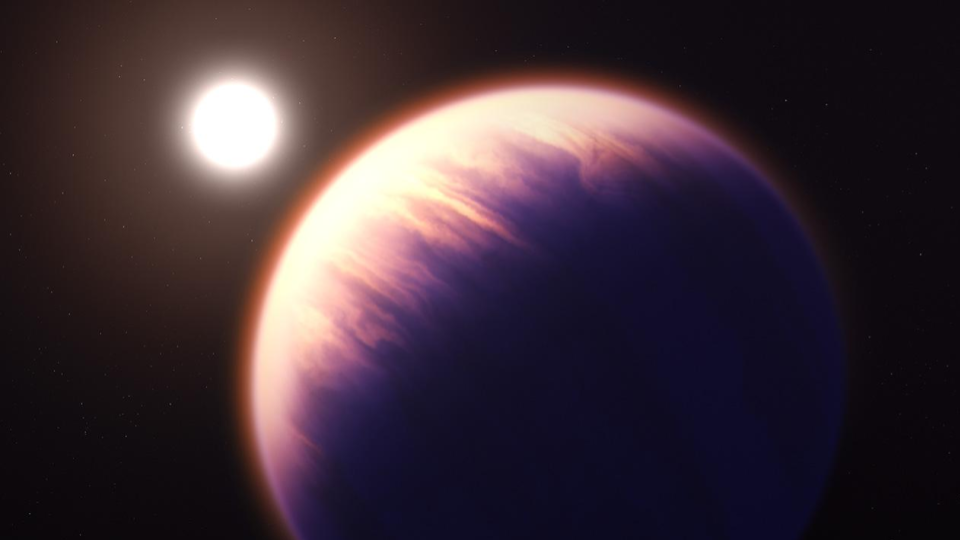
Anyone who likes to exercise outside can tell you the sunrise side of the day is far cooler than the evening twilight. Here on Earth, with our rotating world, this is easy to understand. Throughout the night, our planet radiates away the heat of the day to outer space and that cooler part of the planet then rotates back toward day. This is an imperfect process, but it is efficient enough that I’m willing to bike ride in the early morning light even in the peak of an Illinois summer.
For tidally locked worlds, this kind of a night time cooling never comes to pass, and differences between dawn and dusk can have different physics.
Tidally locked worlds orbit around their stars at the same rate that they revolve about their axis, and the same point on the planet is always experiencing noon, while the midnight point on the planet sees the stars change very slowly as the planet moves in its orbit.
Without an atmosphere, the temperatures on every point of this kind of planet should reach a steady state that depends strictly on how light hits and heats the planet, and on how that heat may radiate through the landscape of the planet.
For worlds with an atmosphere, however, things can be different. Standing wave patterns in the atmosphere are able to – in ways that aren’t fully understood – trigger powerful eastward winds that flow from sunrise toward sunset. In this situation, cold air from the night side can be carried into the dayside sky, and similarly, hot day side air is carried over the sunset and into the night side. In addition to affecting temperatures, these winds also affect clouds and weather.
Variations have been predicted for tidally locked worlds since at least 2002, and only today, with JWST, are we able to observe the details of what is going on.
And so far, we can only do this with one world – which apparently I’m just going to keep updating you on. That world is WASP-39b.
In a soon-to-be-published paper in the journal Nature, researchers led by Néstor Espinoza look at our old favorite, WASP-39b, and the carbon dioxide, water, and other atmospheric molecules that fill its atmosphere. They find that the ratios of carbon to oxygen atoms are similar to what we see in our Sun at both the planet’s sunrise and sunset terminators, but the atmosphere is thicker on the morning side. This is consistent with the morning horizon being 177 degrees Celsius cooler than the sunset horizon. These measurements are consistent with planetary atmosphere general circulation models and cloud models.
This research is part of the JWST’s “Transiting Exoplanet Community Director’s Discretionary Early Release Science”. Designed to gather the data needed to transform our understanding of planets and the origins of life, this program is gathering data on a variety of worlds and releasing it directly to the science community for analysis. I for one am eager for this program to deliver work that leads to papers on worlds in addition to WASP-39b.
